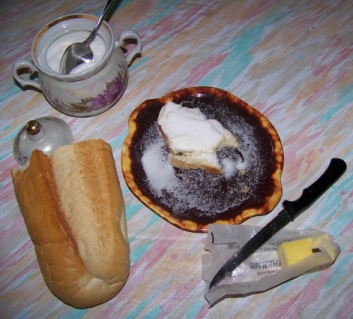I recently published my new favorite math problem:
A deck of 36 playing cards (four suits of nine cards each) lies in front of a psychic with their faces down. The psychic names the suit of the upper card; after that the card is turned over and shown to him. Then the psychic names the suit of the next card, and so on. The psychic’s goal is to guess the suit correctly as many times as possible.
The backs of the cards are asymmetric, so each card can be placed in the deck in two ways, and the psychic can see which way the top card is oriented. The psychic’s assistant knows the order of the cards in the deck; he is not allowed to change the order, but he may orient any card in either of the two ways.
Is it possible for the psychic to make arrangements with his assistant in advance, before the latter learns the order of the cards, so as to ensure that the suits of at least (a) 19 cards, (b) 23 cards will be guessed correctly?
If you devise a guessing strategy for another number of cards greater than 19, explain that too.
If the psychic is only allowed to look at the backs of the cards, then the amount of transmitted information is 236, which is the same amount of information as suits for 18 cards. This number of guesses is achievable: the backs of every two cards can clue in the suit of the second card in the pair. This way the psychic can guess the suits of all even-numbered cards in the deck. So the problem is to improve on that. Using the info from the cards that the psychic is permitted to turn over can help too.
The problem is from the book Moscow Mathematical Olympiads, 2000-2005. The book and Russian blog discussions provide many different ideas on how to guess more than half of the deck.
Here is the list of ideas.
Idea 1. Counting cards. If you count cards you will know the suits of the last cards.
Idea 2. Trading. As we discussed before, the psychic can correctly guess the suits of even-numbered cards. By randomly guessing the odd-numbered cards she can correctly guess on average the suits of 4.5 additional cards. Unfortunately, this is not guaranteed. But wait. What if we trade the knowledge of the second card’s suit for the majority suit among odd-numbered cards?
Idea 3. Three cards. Suppose we have three cards. Three bits can provide the following knowledge: the majority color, plus the suit of the first and of the second cards in the majority color. Thus, three bits of information will allow the psychic to guess the suits of two cards out of three.
Idea 4. Which card. Suppose the assistant signals the suits of even-numbered cards. With no loss, the psychic can guess the even-numbered card and repeat the same suit for the next card. If this is the plan, the assistant can choose which of the two cards to describe. Which card of the two matches the psychic’s guess provides an additional bit of information.
Idea 5. Surprise. Suppose we have a strategy to inform the psychic about some cards. Suppose the assistant deliberately fails on one of the cards. Then the index of this card provides info to the psychic.
I leave it to my readers to use these ideas to find the solution for 19, 23, 24 and maybe even for 26 cards.
Share:





 Imagine a slice of buttered white bread with a heap of sugar on top. That was my favorite lunch when I was a kid. My mom was working very hard, I was the oldest sister, and this was what I would make for myself almost every day.
Imagine a slice of buttered white bread with a heap of sugar on top. That was my favorite lunch when I was a kid. My mom was working very hard, I was the oldest sister, and this was what I would make for myself almost every day.